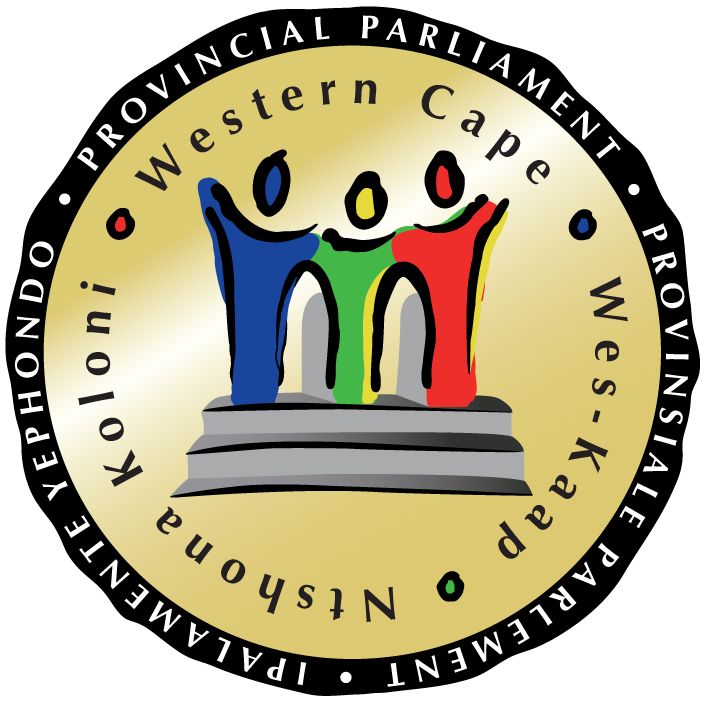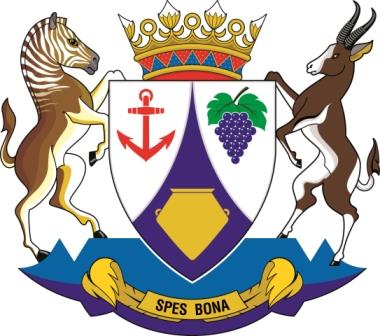Symbols
WCPP logo

The emblem represents a move away from the past and the adoption of a new identity with the emphasis on the people of the Western Cape.
It depicts people at the centre of parliamentary business, with the three figures representing not only the vibrant diversity of the Western Cape but also capturing the colours of the national flag, clearly signalling the message that the Western Cape is part of South Africa and we are all proudly South African.
The three figures represent the three arms of government (the judiciary, the legislature, and the executive), though independent, they are interlinked and intertwined. The three figures are standing at the top of a flight of steps, thus communicating the centrality and elevation of the people we serve. The steps leading to the entrance are reminiscent of the seven steps in the Bo-Kaap but also represent the steps to a parliament that is open to the electorate.
The arches at the top of the flight of steps symbolise the arches at the entrance to the Wale Street precinct and the open doors reflect a parliament that is open and accessible to all. Behind the figures a ray of sunlight reflects the hope and aspirations of the people. The wording around the figures recognises the diversity of the Western Cape and in particular the three official languages of the province - Afrikaans, isiXhosa and English. The emblem is surrounded by a black seal representing the official mark of the WCPP.
The Coat of Arms

The coat of arms of the Western Cape symbolises some of the most important elements of the province’s history, industry and natural resources. The anchor in the shield symbolises hope, stability, and faith. It also alludes to the province’s maritime history and marine riches. The bunch of grapes alludes to the importance of agriculture in the broader sense, and in a narrower context to the province as an important wine-producing region.
The clay pot on the base of the shield symbolises the manufacturing sector, and incorporates an artefact created by the early inhabitants of the province, the Khoikhoi. A Quagga and Bontebok support the shield. The former is extinct, but is currently part of a specialised breeding programme, which hopes to produce a close replica. The latter was saved from the brink of extinction and is unique to the province. These two animals stand on a base in the form of stylised representation of Table Mountain, the Western Cape’s most recognised natural feature.
On the upper rim of the shield rests a distinctive coronet comprising a beaded head-ring, heightened with alternating protea flower head and rings. Beneath the base is a ribbon in the form of ostrich feathers, inscribed with the motto Spes Bona meaning Good Hope.
The mace

The mace, a symbol used in many Westminster-style parliaments across the world, was originally a club-like weapon made of iron or steel. Presently, it is used as a ceremonial staff-of-office and as a symbol of the Speaker's authority and the right of Members of Parliament to exercise freedom of speech.
At the beginning of each sitting of the House, the mace is placed on a table in front of the Speaker and only removed when the House adjourns.
The arrangement of symbols on the mace is similar to that on the coat of arms. At the top of the staff is coronet of proteas and rings. The crown sits on a Khoikhoi pot, decorated with anchors and bunches of grapes. Just above and below the pot is traditional San beadwork. At the bottom of the Stinkwood shaft is a stylised protea. The top and bottom of the mace consists of nine-carat white and yellow gold.